The council has a new plan to regenerate the city centre “street by street”
“We should be able to try these big things and not be afraid of failure,” says Social Democrats Councillor Cian Farrell, who has spearheaded the initiative.
“We should be able to try these big things and not be afraid of failure,” says Social Democrats Councillor Cian Farrell, who has spearheaded the initiative.

Staff at Dublin City Council first flagged the building at 30 North Frederick Street as potentially derelict in April 2009.
More than a decade passed before the council moved decisively to buy the property using its powers under the Derelict Sites Act.
It wrapped up the deal last year.
The building, midway along the west side of the busy street, remains perhaps the most prominent empty building on the stretch. Its facade is dead and its windows are braced and boarded.
But, under new plans to renovate streets in the city centre, work to fix up and use properties such as this should move much faster from here out, says Cian Farrell, a Social Democrats councillor.
The building sits at the heart of one of two streets, the other being Middle Abbey Street, chosen by council managers and cross-party councillors to pilot a new approach to “rejuvenate” the city centre, which targets dereliction and vacancy – but also goes far beyond that.
The “rejuvenation framework” lays out paths for engaging with all property owners on the streets to try to get them to invest in their buildings, says Farrell, who has spearheaded the initiative.
Property owners will be offered incentives and “concierge” support, but will also be subject to stronger and faster enforcement if they refuse to engage with council efforts to tackle empty rundown buildings, the framework says.
The end goal is a model to regenerate Dublin street by street, says Farrell.
“This is the first time that we’ll be doing a holistic street regeneration across both the buildings and the streetscape for both private-sector and for council-led redevelopment,” said Farrell, at a meeting of the council’s Planning and Urban Regeneration Strategic Policy Committee on 30 September.
“So, very excited about that,” he said.
Ultimately, the work would be done by a team in the planned new council-owned development company – or special purpose vehicle (SPV) – which is envisaged by the Taoiseach’s Taskforce for the City Centre.
At the planning committee meeting, councillors praised the Urban Redevelopment Working Group, and that its sessions were held outside of the public council chamber.
Consultation drew in more than 100 stakeholders, with housing charities, finance organisations, developers, and lobbyists – from the Land Development Agency and the Ó Cualann Cohousing Alliance to Ballymore, Grayling Properties, Hines and Progress Ireland.
“This particular room is the worst place of all to reach agreement on anything,” said Labour Councillor Dermot Lacey. “We should have much more meetings outside.”
Green Party Councillor Michael Pidgeon said that Farrell’s initiative, and great process and result, had made him wonder what he and other councillors had been doing up to now.
Indeed, the framework charts a welcome path out of the stasis around how the council tackles vacancy and dereliction in the city, said Pidgeon later on the phone.
“What is happening, at the moment, is essentially nothing,” said Pidgeon.
Conor Reddy, a People Before Profit councillor who sat on the working group, said that he backs the plan.
But if the model takes off, he wants to ensure safeguards against gentrification. “That is a worrying aspect,” he said.
Reddy and Pidgeon both pointed to the focus on cost-rental development – a kind of affordable rental with rents set to cover just the cost of developing and maintaining the homes and a small bit of profit – as one of the bulwarks against displacement.
But while there’s still much to be worked out, it is unclear if the model being put forward at the moment by the working group is actually cost-rental.
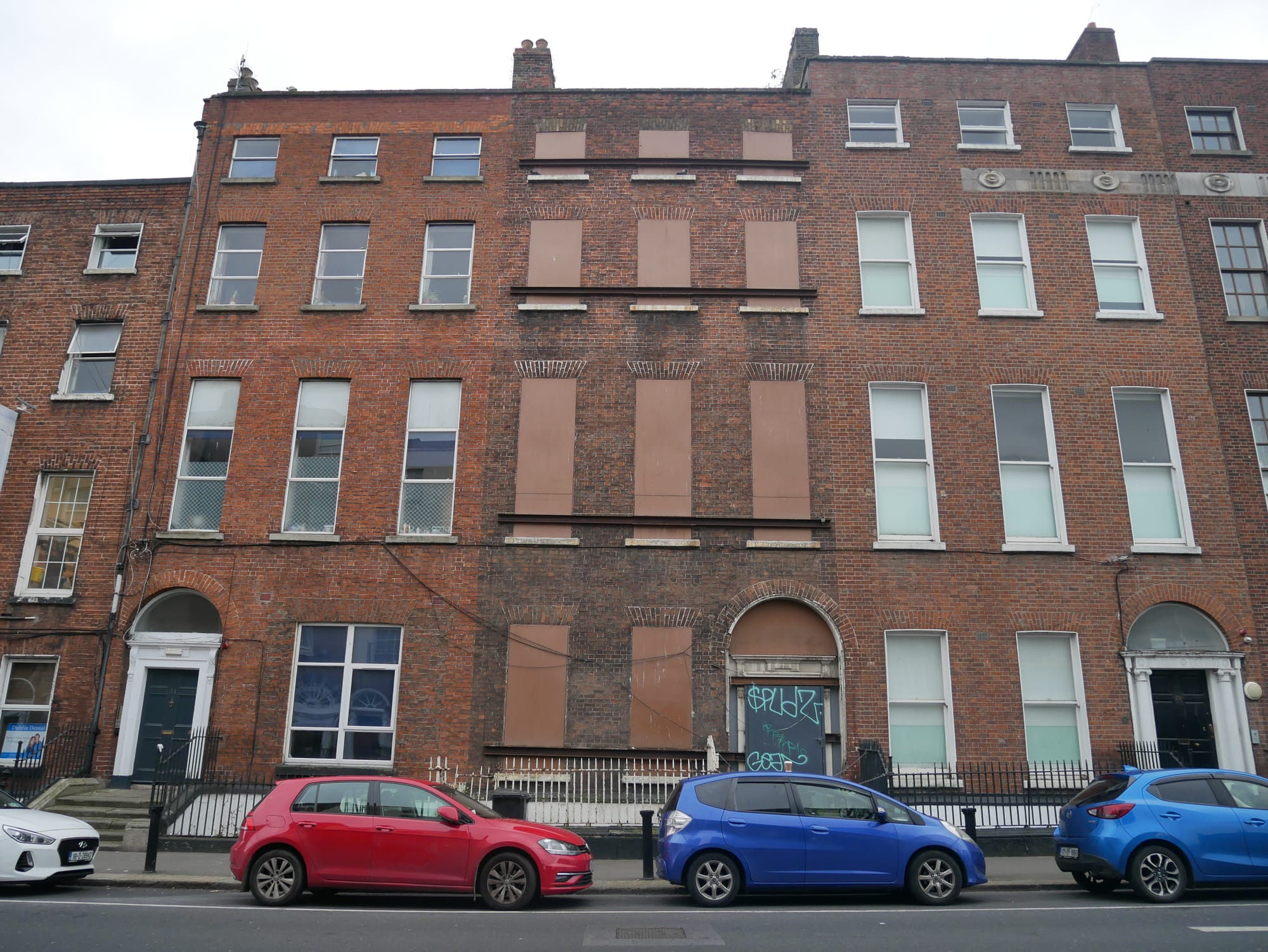
The Urban Redevelopment Working Group had five sessions between March and July, said Farrell, at the planning committee meeting on 30 September.
The end result? This “regeneration framework” that scales through a special purpose vehicle, he said. The SPV is meant to be, basically, a public development company.
The roll-out has five phases, he says. Work began last June and should end in June 2028.

The first phase is collecting and mapping data on the pilot streets. That should be done by year’s end, his presentation says.
With that, the council can build 3D digital twins of the streets to get a baseline of what’s going on, conditions, vacancy rates, and development potential, said Farrell.
“If we don’t have this information, you know, we’re kind of throwing darts in the dark,” he said.
The second phase is firming up the strategy and team dedicated to the work. That means setting out clearly what incentives the council could offer property owners to get them to redevelop properties, he said.
Could the council help with building designs, planning advice, give derogations across conservation and building control? he said. “These types of things.”
They will also look at increased enforcement in different areas too, said Farrell. Not just dereliction and vacancy measures, he said, but also overdue rates collection, and enforcement across planning, waste management, and fire-safety.
Running point on this for the council will be a new project management unit, which at first will sit under its City Coordination Office, said Farrell.
The City Coordination Office is the group of council officials, business representatives, Gardaí, and other government agencies that are leading the roll-out of the recommendations from the Taoiseach’s Taskforce for the City Centre.
The project management unit will offer this one-stop shop, or concierge service, to property owners, and redevelop council-owned buildings, and work on public realm upgrades too, he says.
The council has sign-off from the department to set up that team. “Hopefully, we’ll be able to hire them pretty quickly and get up and running,” he said.
Once those steps have been taken, the on-the-ground work starts. The third phase involves proactive engagement of all private owners on the streets, he said.
Staff intend to talk to them about their plans, obstacles, and what support the council’s new concierge service can offer, building a custom roadmap for them, he said.
“Trying to portray that we are there to try and make something positive happen with their building. If it is vacant, if it is derelict, if it is underused and underactivated,” he said.
Telling them about the government schemes that are out there potentially offering funding to fix up their properties – Buy and Renew, Repair and Leasing.
Meanwhile, there’ll be escalated enforcement for non-cooperative owners, he said.
The council, meanwhile, will look at and settle on how it will rededevelop its own buildings, he said. “Into maybe it’s housing, it could be retail, it could be commercial, it could be mixed-use.”
“The goal here is city centre regeneration,” he said. “Just want to be very clear on that. Housing, yes, is a priority, but there is a broader aspect to the SPV as a place-making and regeneration actor as well.”
At this stage, the first projects should be agreed for private properties, council properties, meanwhile uses and public-realm upgrades during this phase, says the working group report.
That the council is looking to engage and work with all property owners – not just those with vacant and derelict properties – is a sign of the scope of the rejuvenation under the plan, said Farrell, later by phone.
“It’s a holistic regeneration of the street. And then again, within that, dereliction and vacancy is an element of it, but all stakeholders would be involved,” he said.
Talking to all property owners is important given that, he said. “We mightn’t know if a building is fully in use even if it technically, from the outside, it might look like it’s fully activated.”
All owners should also be in the loop if the council plans to put money into public realm upgrades – lighting, greening, pocket parks and shopfront improvements, he said. “So that everybody is on board and knows what is happening.”
“It could encourage investment in the building or upgrading their own offering or whatever,” he said.
But they will engage with everybody on the street beyond property owners, he said. “We want to talk to existing tenants, we want to talk to existing retailers.”
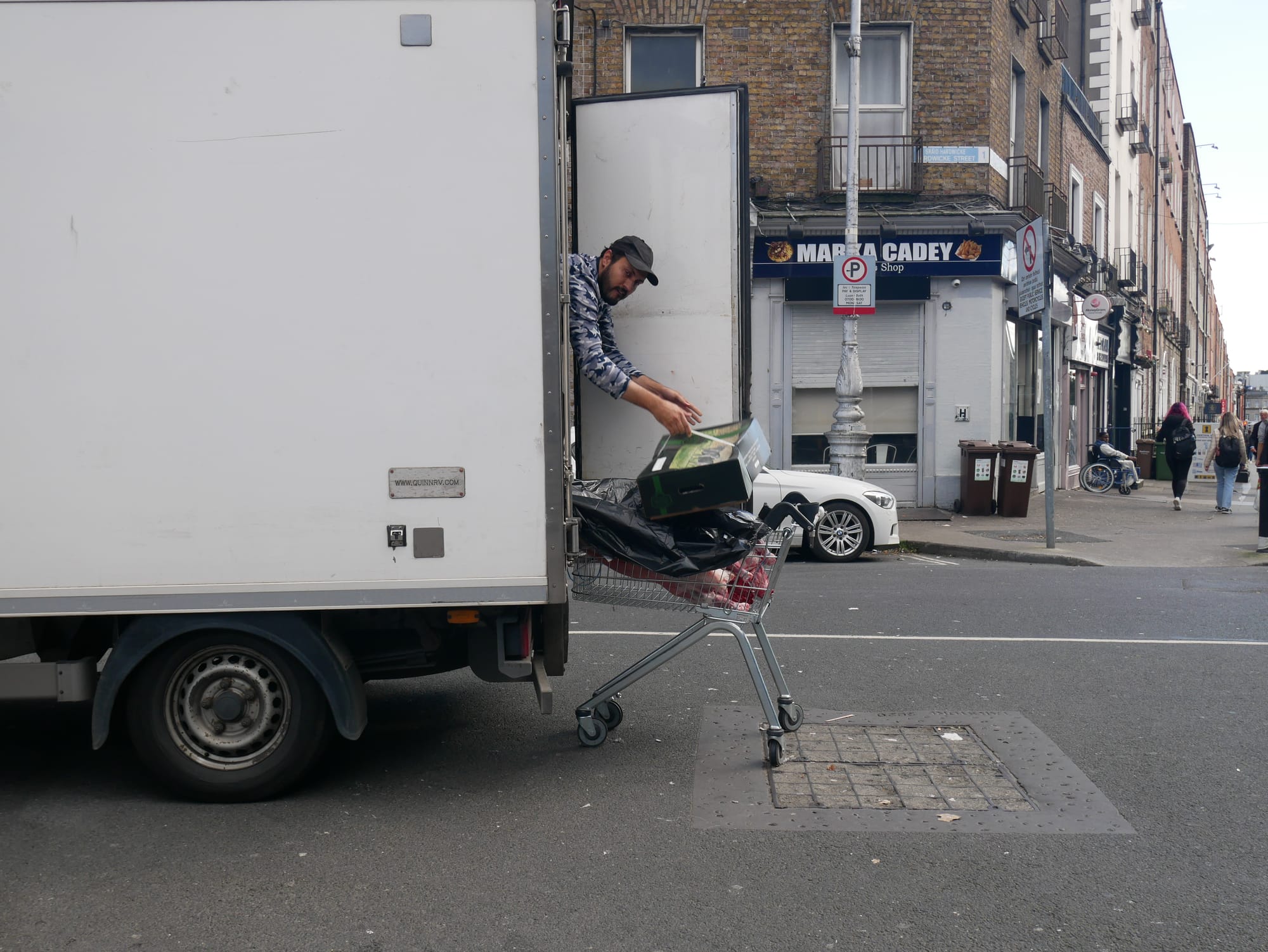
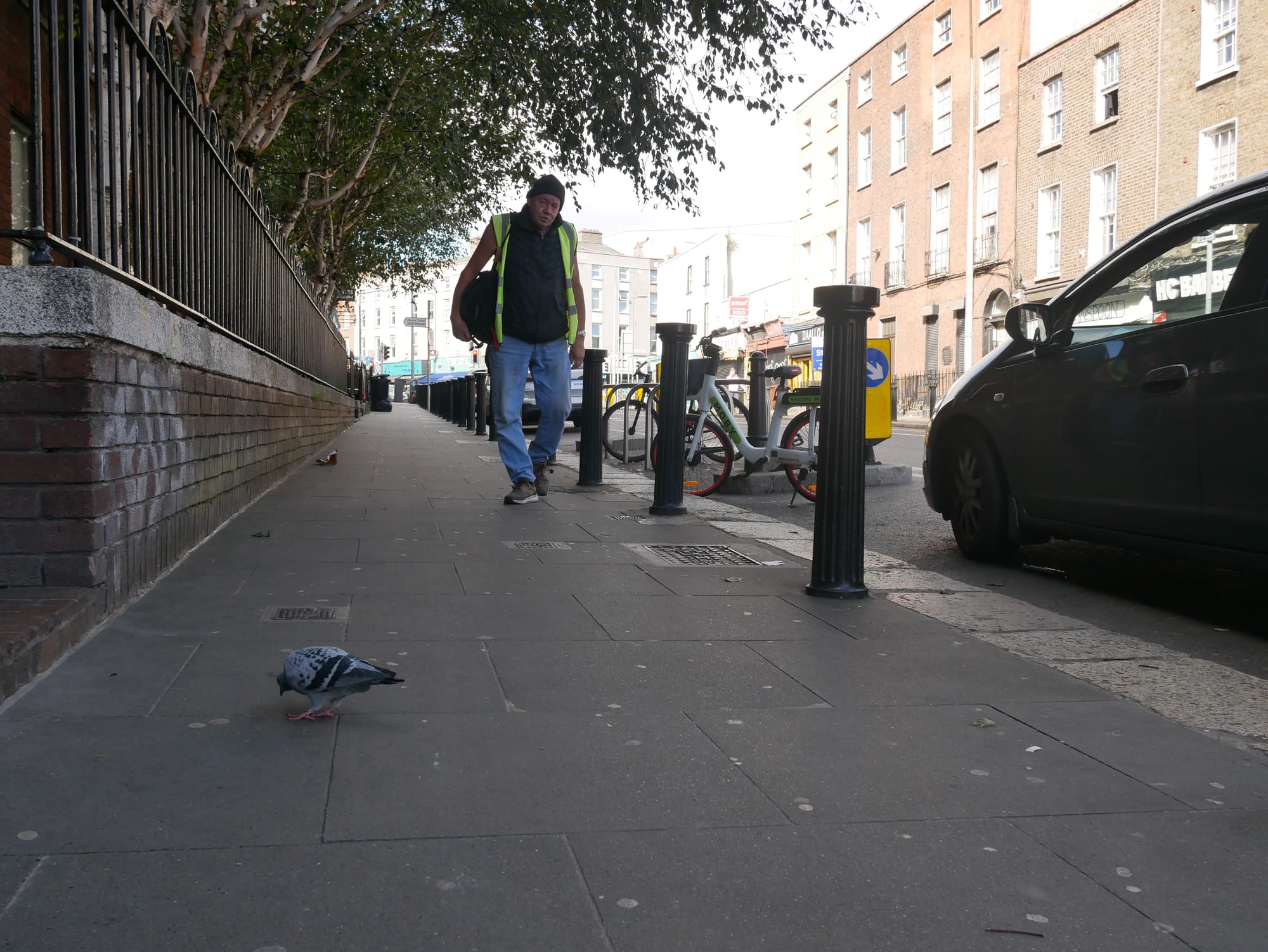
Investing in buildings can impact groups differently – whether big or small property owners, renters, businesses, and community groups.
For property owners it can be a financial burden, for tenants it can mean higher costs which can force them out of an area.
RSS Irish Estates Limited told the Residential Tenancies Board (RTB) in early July that they were having to put more money into the building at 28 North Frederick Street.
The “landlord’s investment was suffering due to the increased costs to run the building”, the tribunal report relays.
The building was well maintained but “there were also costs involved in complying with minimum standards following local authority inspections”, the landlord’s agent said.
So, they had needed to add monthly service charges on top of the €1,228.40 in rent paid by a tenant in one flat, it said. The RTB ruled that this was unlawful, against the rent-cap in rent pressure zones.
But at the hearing, the landlord’s agent said that “if the Landlord was not permitted to impose a service charge on the Tenant, he would need to consider terminating the tenancies with a view to selling due to the ongoing financial pressures”.
RSS Irish Estates’s single shareholder is RSS Holdings Limited, a company registered in the British Virgin Islands.
Its ultimate beneficial owners were Smita and Ramesh Prabhakar as of 2018, according to the Pandora Papers, available via the International Consortium of Investigative Journalists’ Offshore Leaks Database.
Michael Pidgeon, the Green Party councillor, said that he gets frustrated with opposition to investment in places because of fears of gentrification.
It just stops public investment in spaces, he says.
Gentrification happens anyway, he said, pointing to the Liberties even before any of the street upgrades that are now underway in that neighbourhood. “Gentrification was still happening.”
North Frederick Street hasn’t been in stasis either. There have been plenty of approved developments, on paper at least, for development and densification.
At 22 North Frederick Street, which has been left vacant and derelict for years, Jihe Limited was granted permission in August this year to develop four apartments in the building.
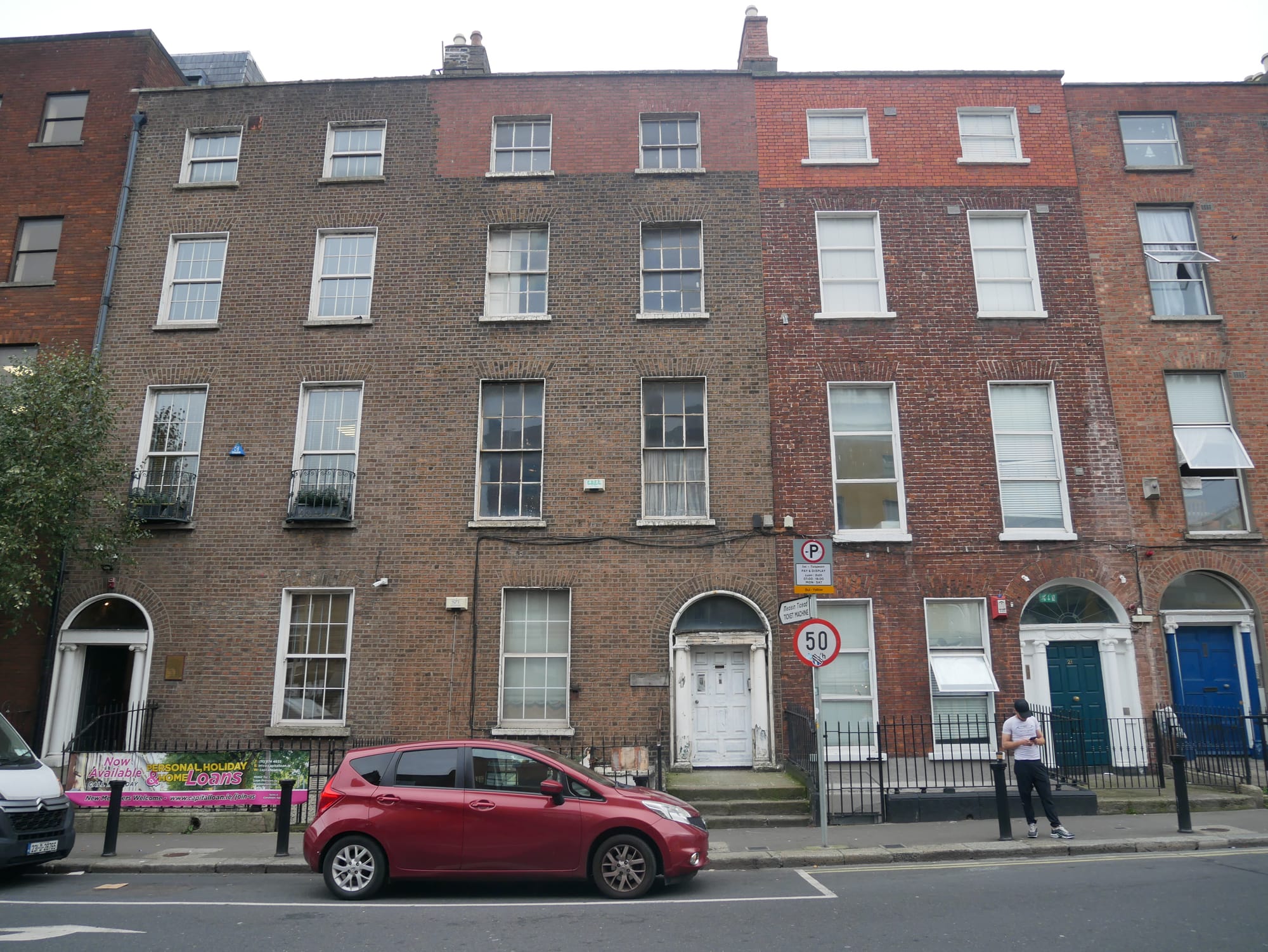
At 32 North Frederick Street, Clair Kilgarriff was granted permission in July to change the use of the dental surgery on the ground and first floor to residential.
Mosaro Limited – a Cyprus-based subsidiary of a Luxembourg fund connected to LRC Group – was granted permission in May 2024 to build a new four-storey building with six apartments at the back of its property at 29 North Frederick Street.
Meanwhile, RSS Irish Estates Limited was granted planning permission in May 2019 to build four new apartments at the back of 28 North Frederick Street – and in December 2021, to convert a creche on the ground floor of the existing building to another big two-bed apartment.
Pidgeon says for him the heart of gentrification is housing costs. “The core of gentrification is housing: can people afford to live in an area?”
His hope is that homes created by the council’s to-be-formed development company in vacant and derelict buildings would become social and cost-rental, he said – and so respond to concerns about displacement.
But also, if a long-vacant private apartment or space is lived in again, that would also be an improvement on the present, he said.
Philip Lawton, a geography professor at University College Dublin, says that the new rejuvenation framework does seem a good plan on paper. “It’s really progressive.”
One caveat he would make is that there seems to be an assumption that buildings are derelict or vacant as they are abandoned or forgotten by owners, he said. “But it’s very context specific and site specific.”
“I just wonder what’s going to happen when they hit the ground, in terms of their properties,” he said. “What those owners have in mind is really central to this.”
They also do need to be extremely careful about displacement, he said. “There is the classic tension and conflict in rejuvenation."
“It’s always a double-edge sword,” he said, so “there should be an emphasis that this is an anti-displacement project.”
The council may build cost-rental, he said. But if it also displaces people overall, it won’t have actually achieved aims from a social justice viewpoint, he said.
Said Farrell, the Social Democrats councillor: “I think it’s just something that is going to have to be incredibly closely managed. We’re not trying to gentrify an area.”
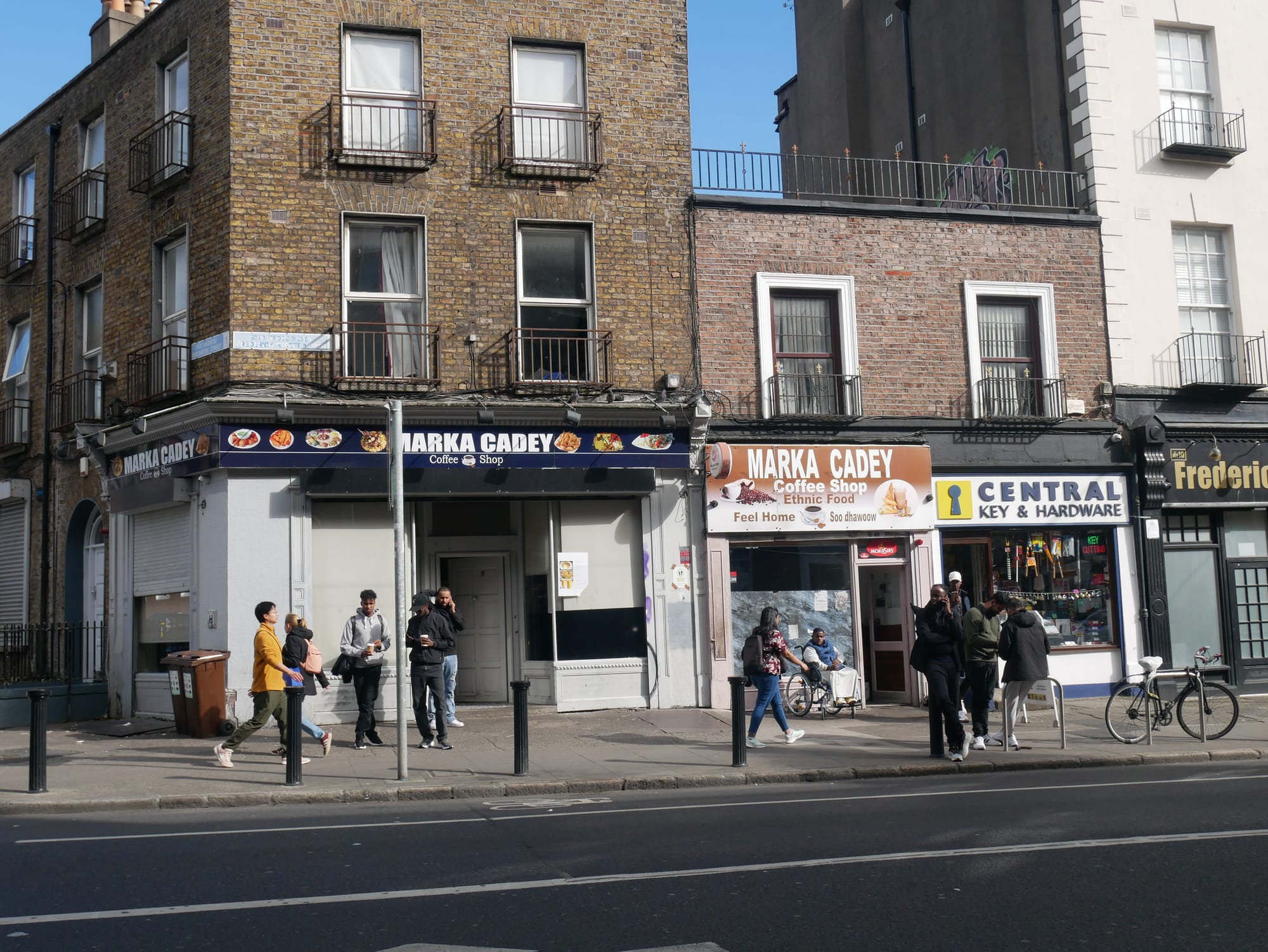
The council is not trying to gentrify the area, but they are trying to get more mixed tenure there, Farrell says.
“There has been an overconcentration of IPAS [International Protection Accommodation Services], social housing, and emergency accommodation.”
The council needs to do more for people who live and work there, he said. “By improving the public realm, mixed tenure, meanwhile use, better collaboration with the guards.”
At the busy Lovinspoon cafe on the east side of the street on Thursday morning, Micheal O’Mhalon said that, for him, the biggest challenge for the street is too many homeless hostels, and too much drug use.
Dereliction and the streetscape aren’t his main concern, he said, as he pulled coffees behind the small counter. “You can paint the walls and all that. It’s still the same problem.”
People in the small immigrant-run businesses on the street said similar – but didn’t want to be quoted on the record because of fears of harassment.
Farrell, the Social Democrats councillor, said that the project isn’t to shut down homeless hostels. “That’s not a goal of the pilot.”
That’s a much broader question, he said. “If we’re looking at change of use of certain buildings, it’s probably outside the scope of this pilot. That’s a nuanced issue. Where do we put additional beds? How do we make sure a balance of services?”
At the planning committee last week, Sebastian Vencken, a representative from the Broadstone Basin Residents Association, had a similar question.
How would the pilot, and the work of the development company, affect the “tenure mix imbalance” of neighbourhoods? he said.
Census data shows that the inner-city is unbalanced in tenure, he says. “Which does unfortunately affect the social capital required to make these projects sustainable in the future.”
Farrell said that the goal is that the council’s development company would be, in the city centre, redeveloping either cost-rental for key workers or private apartments.
“That will, I think, change the tenure mix over a longer period of time,” he said.
Reddy, the People Before Profit councillor, says that city managers are keen on more cost-rental homes in the city centre to add residents on higher incomes.
He would want, he says, any criteria for who gets a cost-rental home there to take into account a “local connection” for a certain percentage of homes, be that an existing tenancy in the area or family.
That would help guard against forced displacement, he said.
By the start of 2027, the new framework says that the council and private property owners should be working on several redevelopment and refurbishment projects on the pilot streets.
The council should at this stage also ramp up enforcement if owners of derelict buildings just haven’t engaged, it says.
The current process is that if a property is derelict, the council can put it on its derelict sites register, charge its owner an annual levy of 7 percent of the property’s market value, and – potentially – compulsorily purchase it.
But the council has, in the past, been slow to move on those steps.
The report from the Urban Redevelopment Working Group notes, to date, that there have been lengthy timelines in addressing derelict sites, and little enforcement of levies.
The working group report says that the low levy collection is down to “difficulty in tracing ownership, unwillingness to take potentially expensive court action for what might eventually be recovered upon sale, and sometimes political
reluctance to pursue certain owners”.
As for compulsory purchase orders (CPOs), Dublin City Council has faced criticism from councillors for its reluctance in the past to move at speed and use its powers to acquire derelict buildings.
Between 2005 and 2016, the council bought just one derelict property with a compulsory purchase order, according to researcher Lauren Norton.
It has picked up the pace in the years since, with 10 “vesting orders” currently listed on the council website, including that for 30 North Frederick Street.
Farrell, the Social Democrats councillor, says that the working group report now recommends a zero-tolerance approach to enforcement around dereliction that maybe wasn’t there in the past – and greater resources to enable that.
The city’s derelict sites unit is working hard, said Farrell at the meeting.
But it only has three staff members. Limerick meanwhile, a much smaller city, has 10 or 11 staff members working to combat dereliction, he said.
Beefing that up is important, he said.
Reddy, the People Before Profit councillor, said that the strong enforcement and levies is the strand of the plan that he would emphasise and plans to keep an eye on.
The working group’s report recommends not only that the council use its existing powers more energetically, but that it push the central government for more.
It calls for pushing the central government to increase the rate of derelict site levies, streamline the compulsory purchase order (CPO) process, and give councils greater powers to force sale of properties for non-payment of derelict sites levies.
A spokesperson for the Department of Housing hasn’t responded to queries about its position on the need for these greater powers for dealing with dereliction.
But yesterday, Finance Minister Paschal Donohoe, a Fine Gael TD, announced as part of Budget 2026, a new Derelict Property Tax, to be administered and collected by the Revenue Commissioners.
That will replace the derelict sites levy, he said, and involve a new register for dereliction.
He didn’t say what the new tax rate would be set at, what role local authorities would have going forward in relation to the register, or mention any changes in CPO powers.
The future of buildings that the council does end up buying – like 30 North Great George’s Street – is to be decided by the “waterfall reactivation and disposal framework” that the urban working group has also drawn up.
The best outcome is if a private owner does up a derelict property and gets it back into use themselves, said Farrell.
If that doesn’t happen, the council should encourage them to sell to another private party, he said. If that doesn’t happen then council should compulsorily acquire it, he said.
After this, the council should look at whether to keep it and redevelop it, or sell it on, he said. Its decision will depend “on location, council priorities, and market interest,” the working group paper says.
If the council keeps it, it should go into the council projects pipeline, he said. If it is disposed of, it should be offered first to the Land Development Agency, then to a housing charity, then to a first-time buyer, and lastly to a developer, he said.
“It is important to note that the council should attach covenants or conditions to ensure the purchaser actually develops the property within a timeframe,” he said.
Dublin City Council often does this already.
Although, there are high-profile examples of the council’s reluctance to enforce those covenants – as happened with a derelict site in Dolphin’s Barn, and old coach houses near Stephen’s Green.
Eventually, the vision is to set up the council’s development company to manage and deliver these projects – and the rest of the city centre changes.
The aim is to incorporate that next year, and then transfer the project team and any projects over to that, he said.
Farrell says that the idea with the SPV, or city development company, is to enable a revolving fund, become less reliant on grants over time, and act as a commercial entity – as a housing-led developer and place-making developer.
Rents or revenue from property sales would recycle back into this fund to finance borrowing and the next round of projects, he said.
At the meeting, Farrell gave a loose example of how a cost-rental project made by this public development company might look.
If the council bought a derelict Georgian building to redevelop into 16 studio apartments, it estimates it would cost €500,000 for each, he said.
With a subsidy from the central government’s Affordable Housing Fund – a fund of up to €150,000 a home that councils can use for cost rentals – the council could whittle it down to €350,000 for each studio apartment, he said.
It could then rent them out as cost-rental homes for €1,300/month each, which, he says, would be 25 percent below market rate. “We can talk about whether that rate is achievable or not.”
It could borrow against the rental income to begin another project, he said.
It could also choose to sell the building on to a state agency, or housing charity, or to the private sector – with covenants that it stays cost-rental, he said. “The key piece is that the money is recycling through and reducing reliance on grants over time.”
The model, said Farrell later on the phone, is predicated on the rents being “anchored” at 25 percent below market rate – based on their research of studios in the area going for about €1,700 or higher.
It envisages rents rising by 2 percent a year – to cover inflation, he said.
As he understands it, the rental rates would be anchored long-term at that 25 percent below market rate – even after that 35 year repayment period for the development costs for the project, he said.
This would be concerning, says Eoin Ó Broin, the Sinn Féin housing spokesperson. “That’s not how other cost-rental projects work.”
Under the Affordable Housing Act, cost rents are supposed to be set to cover the cost of development – finance, construction, and management and an undefined “limited equity return” – over 40 years.
Rent is only supposed to cover those development costs – which have to shake out at “a minimum” of 25 percent below market rates, a Department of Housing spokesperson has said in the past.
In other words, that percentage is supposed to be an extra check for eligibility, not an anchor or target.
When politicians or policymakers talk about the initial rents for cost-rental projects being too high at the moment, the caveat is that rents are expected to come down over time, Ó Broin said.
In other jurisdictions, after the development and finance costs have been paid back, the cost rents – which are disconnected from market rents – also drop dramatically.
Revolving funds are managed differently too. In Austria, cost rents are always
directly linked to individual projects, meaning that in the first 35 years or so, the project doesn’t create much surplus or amount to go into any revolving fund.
It is after that period, once loans are repaid, that housing organisations start to take some of the lowered rent and generate surplus, building up equity and reinvesting it again.
As Ó Broin sees it, cost-rental landlords in Ireland shouldn’t be allowed to automatically increase rents with general inflation, he said. They should only do so if the costs have actually increased for that particular project, he said.
He would also note, he said, that if cost-rental schemes are sold on to private landlords, they would likely be pressing for a greater return – which would mean higher rents.
“In fairness to Dublin City, at least they’re trying something,” he said, of the proposals. But they need to be transparent and put all the figures on the table, he says.
At the planning committee meeting last week, Tony Flynn, a council assistant chief executive, mentioned sources of starter funding for the project.
It would potentially include €114 million extra from the central government on top of its existing allocation of funding for the north inner-city, through the Urban Renewal Development Fund (URDF), he said.
But “we can’t rely on grants”, said Flynn.
He foresees funding from council assets that they would like to turn into income-generating assets, he said, and €3 million each year allocated from the council’s annual budget – and derelict site levies.
The last of these, following finance minister Donohoe’s budget announcement yesterday, looks less likely to feed to the council – if the Revenue Commissioners are collecting a new Derelict Property Tax, that money may well go to the central government.
Flynn said that a large part of the regeneration is about sending seed money out there to develop sites and enhance streets and what should follow that is private-sector investment. “The state is not going to solve all these problems, you know, with grants and interventions.”
To govern the pilots on North Frederick Street and Middle Abbey Street, the plan is to set up an interim oversight committee under the planning and urban regeneration committee, said Farrell at the meeting.
There would also be an interim industry forum to help with technical queries around finance and development, he said.
Once the development company is set up, councillors would be its board, said Farrell.
Later by phone, Farrell stressed that the rejuvenation of two streets is a pilot and they hope to test redevelopment in that spirit. “We should be able to try these big things and not be afraid of failure.”
At the planning committee meeting, Pidgeon, the Green Party councillor, said that going forward, he would want to see informal chats between officials and councillors as the pilots progress.
“One of the most important useful things I found about the whole process was that it wasn’t happening here,” said Pidgeon, in the council chamber.
With the pilots, he imagines some of the rejuvenation plan will not survive contact with reality and other parts will work well, he said. He wants to stay in the loop about that, he said.
When they get to the stage of the council selling off properties, he said. “We all know the politically difficult part of this is councillors rubberstamping it at the end, and there’s been a lot of controversy with this kind of stuff.”
“If we’re part of the process, which I think has been the genius of this thing so far, that’ll make the end of the process a lot easier,” he said.